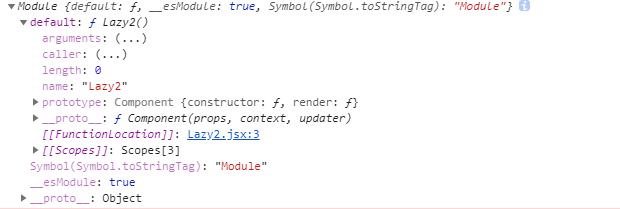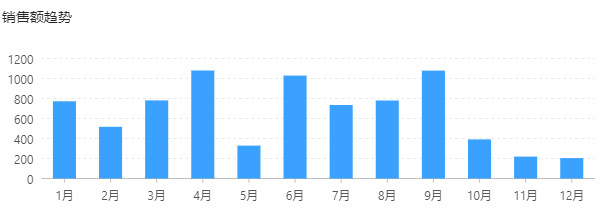【后台管理系统】—— Ant Design Pro入门学习&项目实践笔记(三)
前言:前一篇记录了【后台管理系统】目前进展开发中遇到的一些应用点,这一篇会梳理一些自己学习Ant Design Pro源码的功能点。附:Ant Design Pro 在线预览地址。
Dashboard指示板

pages/Dashboard 目录下:Analysis.js分析页、Monitor.js指控页、WorkPlace.js工作台
用到的一些技术点:react v16.6 动态 import,React.lazy()、Suspense、Error boundaries (来源:Postbird博客)
Ⅰ、动态 import
在 Code-Splitting 部分,提出拆分组件的最佳方式(best way) 是使用动态的 import 方式。
比如下面两种使用方式的对比:
之前:
import { add } from './math';
console.log(add(16, 26));
之后:
import("./math").then(math => {
console.log(math.add(16, 26));
});
可以发现动态 import 提供了 Promise 规范的 API,比如 .then(),关于 ES 动态 import,可以查看下面链接:
同样,下面这篇文章上也可以参考:
目前动态 import 仍旧是 ECMAScript 的提案,并没有纳入规范,不过既然 react 能够大力的推进,应该下个标准会被写入。可以查看 TC39-https://github.com/tc39/proposal-dynamic-import
动态 import 主要用于延迟请求,对于组件我觉得没什么太大的用处,但是对于延迟加载方法或者bundle非常有用,比如下面的代码:
可以发现,当触发点击事件的时候,才会去引入需要的方法或者是对象,并且由于 Promise API 的特性,可以使用 Promise.all Promise.race 这种 API,进行并行加载,然后在 then() 回调中调用方法,非常方便
class App extends Component {
clickHandle = (e) => {
Promise.all([
import('./mods/Lazy2')
]).then(([a]) => {
console.log(a);
a(e);
});
}
render() {
return (
<div className="App">
<header className="App-header">
<button onClick={this.clickHandle}>click</button>
</header>
</div>
);
}
}
webpack 已经支持动态 import,在 create-react-app 和 next.js 中都已经可以使用。如果是自己的 webpack 脚手架,需要在 webpack 中进行配置,具体的可以参考下面的方式https://webpack.js.org/guides/code-splitting/,最终配置完的样式类似于:https://gist.github.com/gaearon/ca6e803f5c604d37468b0091d9959269(这个链接是react文档给出的额,但是我的网络无法访问)
同样的,如果使用 babel,需要使用babel-plugin-syntax-dynamic-import这个组件来保证Babel不对动态导入进行转换。
Ⅱ、React.lazy() 和 Suspense
1、React.lazy()
动态 import 主要应用场景是延迟加载方法,对于组件来说,并不是很适用,但是 React.lazy 对于组件的加载则是有比较大的帮助。
- 目前明确指出,React.lazy 和 suspense 并不适用于服务端渲染
先看一下前后的区别,
之前代码:
import OtherComponent from './OtherComponent';
function MyComponent() {
return (
<div>
<OtherComponent />
</div>
);
}
之后:
const OtherComponent = React.lazy(() => import('./OtherComponent'));
function MyComponent() {
return (
<div>
<OtherComponent />
</div>
);
}
关键点是 const OtherComponent = React.lazy(() => import('./OtherComponent')); 这个语句,摒弃了之前的 import X from 'x' 的静态引入方式。
同样的,这个变动会使得在组件渲染的时候,再去加载包含引入路径的组件。
React.lazy(()=>{}) 这个方法的回调中其实就是包含了一个动态 import, 以下面方式举例:
const Lazy2 = React.lazy(() =>import('./mods/Lazy2').then((e) => {
console.log(e);
}));
箭头句柄后面就是一个动态 import 的使用, 打印出来的 e,也就是引入的内容,而前面引入的是个组件,因此会打印出如下信息:

2、Suspense
要使用 Suspense,需要从 react 中 import:
import React, { Component, Suspense } from 'react';
既然是延迟加载,就会有一个加载过程,之前在渲染的时候,我们基本都是自顶一个一个 <Loading> 组件,然后通过变量控制进行操作,如果加载完成,则取消掉 <Loading> 组件。
如果直接使用 React.lazy,会报错误:需要一个 placeholder ui

既然是延迟加载,就一定会有一个loading的过程,而 Suspense 正是完成这个过程。

如同上面的效果会有一个动态的过程,代码如下:
render() {
return (
<div className="App">
<header className="App-header">
<Suspense fallback={<div>Loading...</div>}>
{this.renderList()}
</Suspense>
</header>
</div>
);
}
Suspense 使用的时候,fallback 一定是存在且有内容的, 否则会报错。
针对网络请求的 loading,我并没觉的这种 fallback 有什么帮助,因为他是组件加载的 loading,如果组件加载完了,那么再去 fallback 就没意义,也没效果了。
Ⅲ、Error boundaries
上面 Suspense 是对 loading 的一个打底,而错误边界可以在任何一个组件中进行错误的捕获。
这里只对错误边界进行一个简要的使用,具体的文档见下:
这里的错误边界用在这个位置是为了当组件懒加载失败的时候,进行错误的捕获和保护:
1、创建错误边界组件
class ErrorBoundary extends React.Component {
constructor(props) {
super(props);
this.state = { hasError: false };
}
// 从error中接收错误并设置 state
static getDerivedStateFromError(error) {
// Update state so the next render will show the fallback UI.
return { hasError: true };
}
componentDidCatch(error, info) {
// You can also log the error to an error reporting service
logErrorToMyService(error, info);
}
render() {
if (this.state.hasError) {
// You can render any custom fallback UI
return <h1>Something went wrong.</h1>;
}
return this.props.children;
}
}
2、在组件中使用错误边界
将创建的错误边界挂到组件中,不适用 React.lazy,因为已经没有更上一层次的错误组件了,万一错误边界组件也懒加载出错,会导致无法捕获。
错误边界组件中,通过 componentDidCatch 捕获错误,可以设置信息或发错误日志。
错误边界的使用示例可以参考下面的示例:
按照上面的例子,在使用的时候,组件中报错,触发错误边界:
Lazy2.jsx:
render() {
throw new Error('I crashed!');
return (
<div>
<p>{this.state.title}</p>
</div>
);
}
App.jsx:
<Error>
{this.renderList()}
</Error>
Error.jsx:
import React, {Component} from 'react';
class Error extends Component {
constructor(props) {
super(props);
this.state = { error: null, errorInfo: null };
}
componentDidCatch(error, errorInfo) {
// Catch errors in any components below and re-render with error message
this.setState({
error: error,
errorInfo: errorInfo
})
// You can also log error messages to an error reporting service here
}
render() {
if (this.state.errorInfo) {
// Error path
return (
<div>
<h2>Something went wrong.</h2>
<details style={{ whiteSpace: 'pre-wrap' }}>
{this.state.error && this.state.error.toString()}
<br />
{this.state.errorInfo.componentStack}
</details>
</div>
);
}
// Normally, just render children
return this.props.children;
}
}
export default Error;
最终结果:

Dashboard模块除了上面的新技术点,在AntD组件和布局上也有一些常用的知识点:GridContent网格内容布局、Charts图表、Tabs标签页
Ⅰ、GridContent网格内容布局

使用GridContent组件,需要从components/PageHeaderWrapper目录下引用,源码如下↓
import React, { PureComponent } from 'react';
import { connect } from 'dva';
import styles from './GridContent.less';
class GridContent extends PureComponent {
render() {
const { contentWidth, children } = this.props;
let className = `${styles.main}`;
if (contentWidth === 'Fixed') {
className = `${styles.main} ${styles.wide}`;
}
return <div className={className}>{children}</div>;
}
}
export default connect(({ setting }) => ({
contentWidth: setting.contentWidth,
}))(GridContent);
1、组件继承自PureComponent
PureComponent 纯组件是React新加的一个类,是优化 React 应用程序最重要的方法之一,易于实施。
只要把继承类从 Component 换成 PureComponent 即可,可以减少不必要的 render 操作的次数,从而提高性能,而且可以少写 shouldComponentUpdate 函数,节省了点代码。
具体使用及原理可参看下面的链接:
2、设置多个PageHeader网格式分布样式
.main {
width: 100%;
height: 100%;
min-height: 100%;
transition: 0.3s;
&.wide {
max-width: 1200px;
margin: 0 auto;
}
}
Ⅱ、Charts图表
利用 Ant Design Pro 提供的图表套件,可以灵活组合符合设计规范的图表来满足复杂的业务需求。
- 官网Charts组件介绍:https://pro.ant.design/components/Charts-cn/
 |
|
| 迷你区域图MiniArea | 迷你进度条MiniProgress |
 |
 |
| 迷你柱状图MiniBar | 柱状图Bar |
 |
 |
| 饼状图Pie, yuan | 迷你饼状图Pie |

